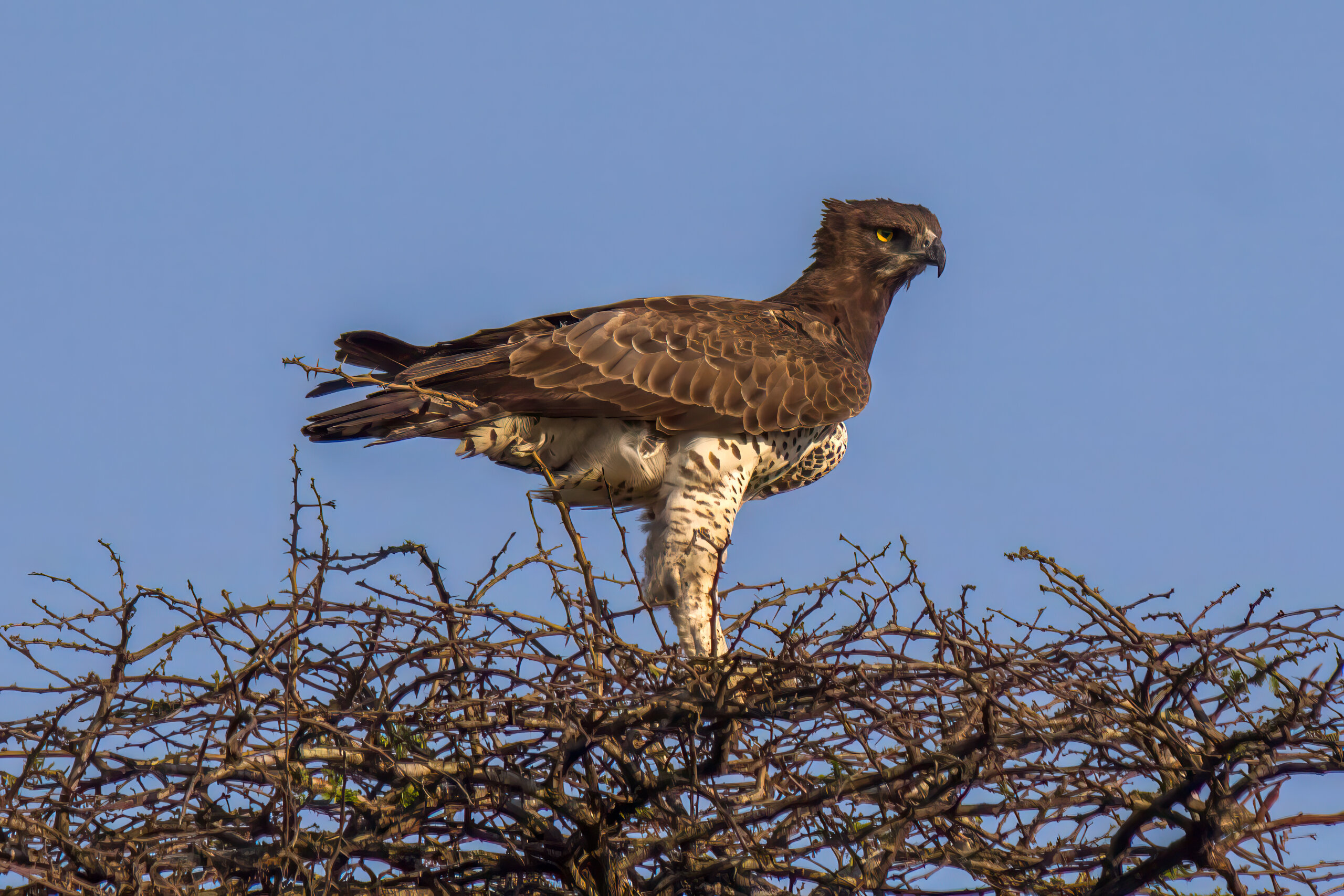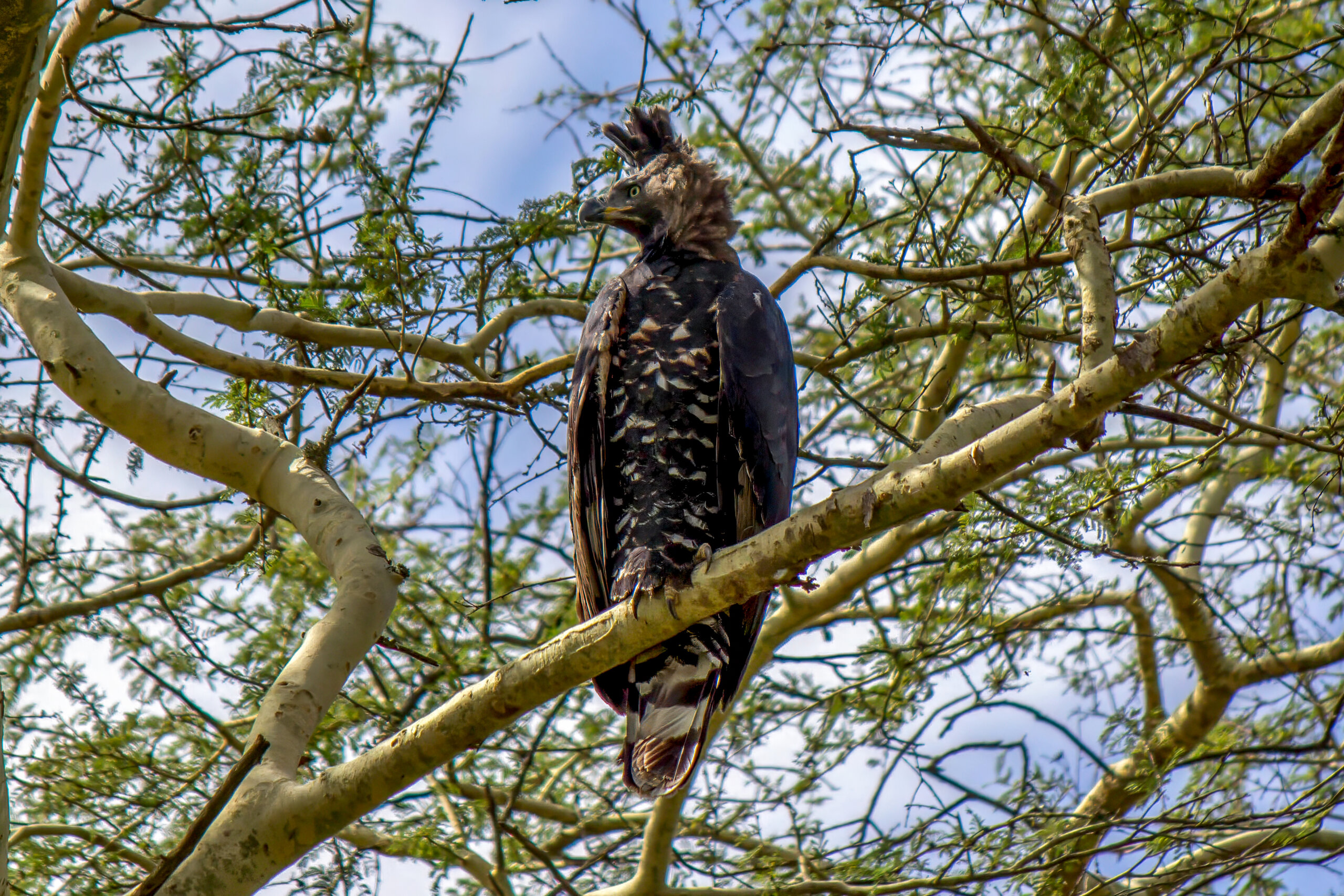Description
The African fish eagle (Icthyophaga vocifer) is perhaps the most famous bird of prey in Africa, and its distinct call “weee-ah hyo-hyo-hyo” is often referred to as “the call of Africa”. It is an unmistakable and large eagle commonly found close to water bodies throughout sub-Saharan Africa. Head, chest, and tail is white, rest of the body is brown, and wings are black. Beak is black-tipped and face is yellow and bare. Juveniles are mostly brown, and will go through several molds for up to four to five years before reaching full maturity and adult plumage. Body length reach 63-75 cm (25-30 in), with females being larger than males. Females weigh 3.2-3.6 kg (7-8 lbs), whereas males weigh 2-2.5 kg (4.4-5.5 lbs). Males and females have an average wingspan of 2 m (6 feet) and 2.4 m (8 feet) respectively.
Diet & habitat
The African fish eagle can be found in many different habitats, such as savanna, rain forests, swamps, and even deserts, as long as there is a water body with sufficient food supply nearby and trees to perch in. It is often found near freshwater, but it can also be found along the coast, especially close to river mouths and estuaries. One food requirement is fish, which takes up most of its diet. It has specialized large claws to grab slippery prey in the water. It will additionally prey on other birds, small crocodiles, monitor lizards, terrapins, and occasionally smaller mammals, such as monkeys and hyraxes. It will sometimes feed on carrion as well as steal prey from other birds, such as the goliath heron.
Nesting
African fish eagles are monogamous breeders and mate for life. Although solitary breeders, pairs can nest in proximity of only a few hundred meters in productive areas with plenty of prey. One pair often re-use nests within their territory, which are built in large trees close to water. A nest can grow to be quite large with the addition of twigs, reeds, and other similar material every new season. Breeding season is generally during the dry season when water levels are low. It is quite common for a breeding pair to call and duet during this time, as well as display acrobatic courtship rituals in mid-air. The female will lay one to three eggs in the nest to be incubated for approximately 44 days. Males will only incubate when the female leaves to hunt. After hatching, the chicks will stay in the nest for 65-75 days as both parents feed them before they fledge. An African fish eagle generally lives between 12 to 24 years in the wild if lucky enough to reach adulthood.
Status
The African fish eagle is quite common throughout most of its range, and serves as a special symbol in many African countries. It is on the coat of arms of Zambia, Namibia and South Sudan. Population numbers are though to be up towards 300,000 individuals, and it is listed as least concern on the IUCN Red List. African fish eagle is, however, vulnerable in Namibia, where numbers are lower. Main threats are pollution and pesticides.








